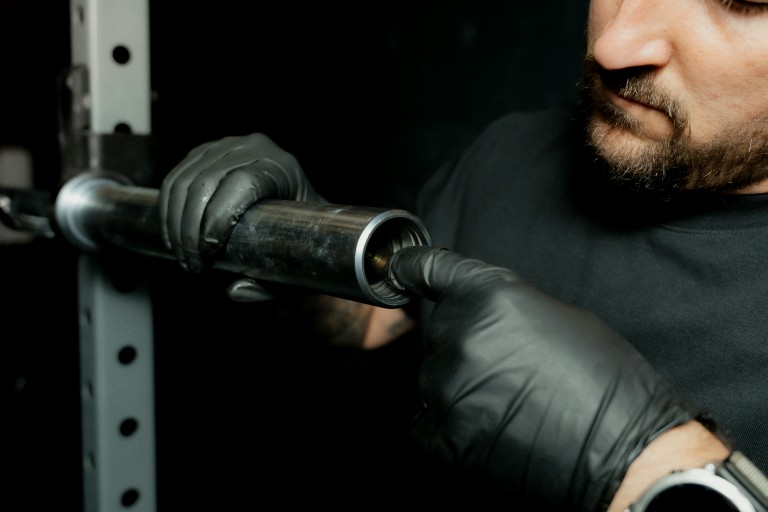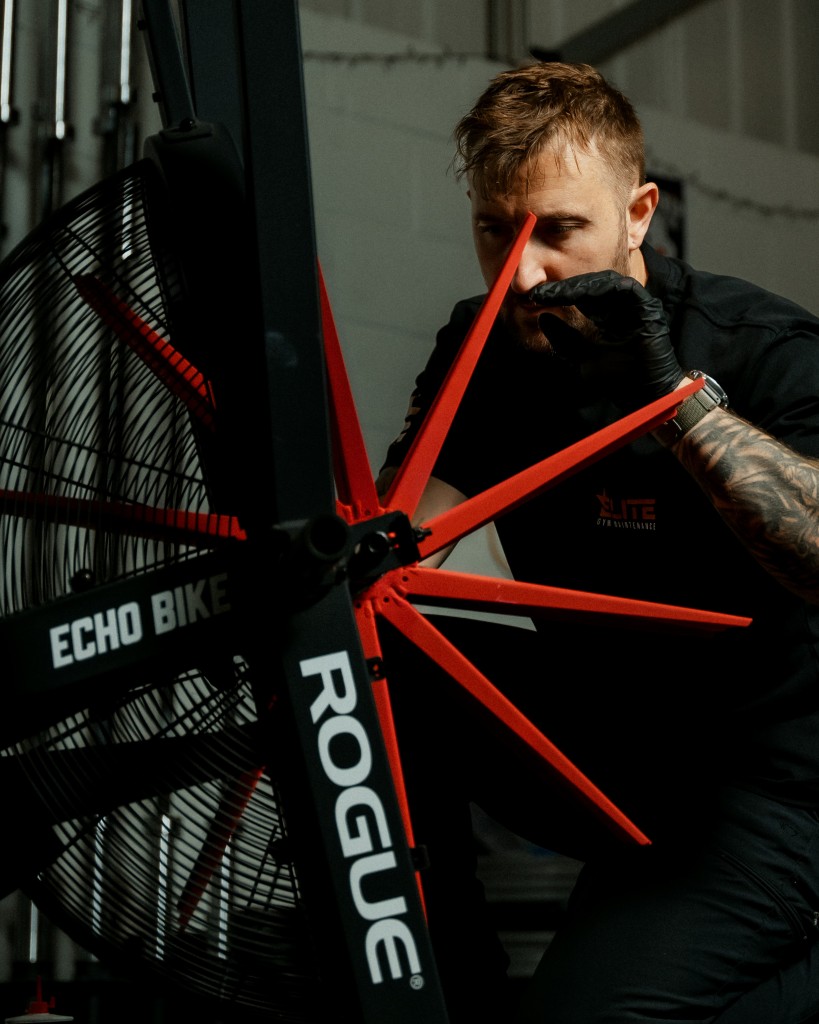
08th Oct 2024

When running a gym or fitness facility, maintaining your equipment is important to ensure safe systems of practice safe person, safe place, safe practice and safe equipment. Regular maintenance not only extends the life of your equipment but also prevents costly repairs and equipment downtime. In this blog we will look at ten essential tips for maintaining gym equipment to keep your gym in good working order.
1. Regular Cleaning and Disinfection
Keep the gym clean is a non-negotiable sweat, dust and bacteria can accumulate quickly, leading to both and hygiene issues and potential equipment damage. Regular cleaning prevents the buildup of harmful germs and keeps your equipment looking and performing great.
This can be easily achieved with some disinfectant and a soft cloth to wipe down all equipment surfaces especially high touch areas. Make it a habit to clean equipment in the end of the day.
2. Lubreacte Moving Parts
Friction is the enemy of any piece of gym equipment. Without proper lubrication, moving parts on your equipment can wear down quickly, leading to expensive repairs or replacements. This can be easily be avoided by following manufacturer guidelines and recommendations on when and servicing and maintenance should be conducted.
3. Check and Tighten Bolts and Screws
Loose bolts and screws can lead to instability, which not only compromises the safety of the equipment but also increase the risk of damage to the equipment and the injuring the individual using the equipment. You should regularly inspect all bolts, screws and fasteners on all your equipment. Keep a tool kit to hand with the essentials tools to to this with ease. Mark equipment that is unserviceable for members to avoid until it can be repaired by an engineer.
4. Inspect Cables and Belts
Cables and belts are critical components of many gym equipment. If they are worn or frayed, they can snap, causing injury to the users and potentially damaging the equipment. It’s important the we frequently check cables on weight machines and belts on all equipment that uses belts. If you notice any damage to cables or belts mark the machine till a engine can come out to replace it. This will avoid any damage to the machine and injury to the user.
5. Test Safety Features
Some gym equipment have safety features and they are there for a reason. You have to make sure they are effective and work properly. Regular testing these features ensure they will function when needed. Testing emergency stop buttons on treadmills to ensure they they work correctly and check all safety pins, locks and clips on weight machines.
6. Calibrate Machines Regularly
Accurate calibration is essential for machines like treadmills and bikes, to provide accurate readings and correct speed, resistance and incline settings. Its important to follow manufactures instructions on the calibration interval and if you don’t know how to calibrate your machines, contact an engineer to do this for you. Regular calibration will ensure all machines functions correctly and lasts longer.
7. Replace Worn-Out Parts Promptly
Ignoring minor issues can lead to major issues down the road. This is why its important that you replace worn-out part as soon as you notice them or place the machine in isolation until a engineer can come and replace them. There is common parts that you can keep in inventory so the engineer can replace them as soon as the faulty part gets noticed.
8. Maintain Proper Climate Control
The climate in your gym can have a big impact on your equipment. Having extreme temperatures and humidity levels can damage both mechanical and electronic components on certain machines. Ensure they gym is well ventilated, with temperature and humidity levels kept and recommended range for your equipment. This will preserve the life of the machines.
9. Keep a Maintenance Logbook
A maintenance logbook is an invaluable tool for tracking the upkeep of all your equipment that requires maintenance. It helps you stay on top of maintenance schedules, part replacements and any issues that may arise. Record each maintenance activity, including the date, details and work that was conducted. These logs can identify recurring issues and ensure all equipment is safe to use. This also hedges you against any liability issues if there should be a injury on any piece of equipment.
10. Train Staff on Proper Use and Maintenance
Even the best built equipment can be damage by improper use. Ensure that all your gym staff members are properly trained how to use equipment is important. This way they can pass on correct information to members that is getting inducted into the gym. In conjunction with proper use it’s also important to teach staff how to do daily checks to identify potential equipment faults so they can be reported to get repaired.
Conclusion
Proper maintenance is the backbone of a well-functioning gym. By following these ten essential tips, you can ensure that your gym equipment remains safe place, reliable, and in top condition for years to come. Remember, a well-maintained gym not only protects your investment but also keeps your members happy and coming back for more.